Category: Technology & Engineering
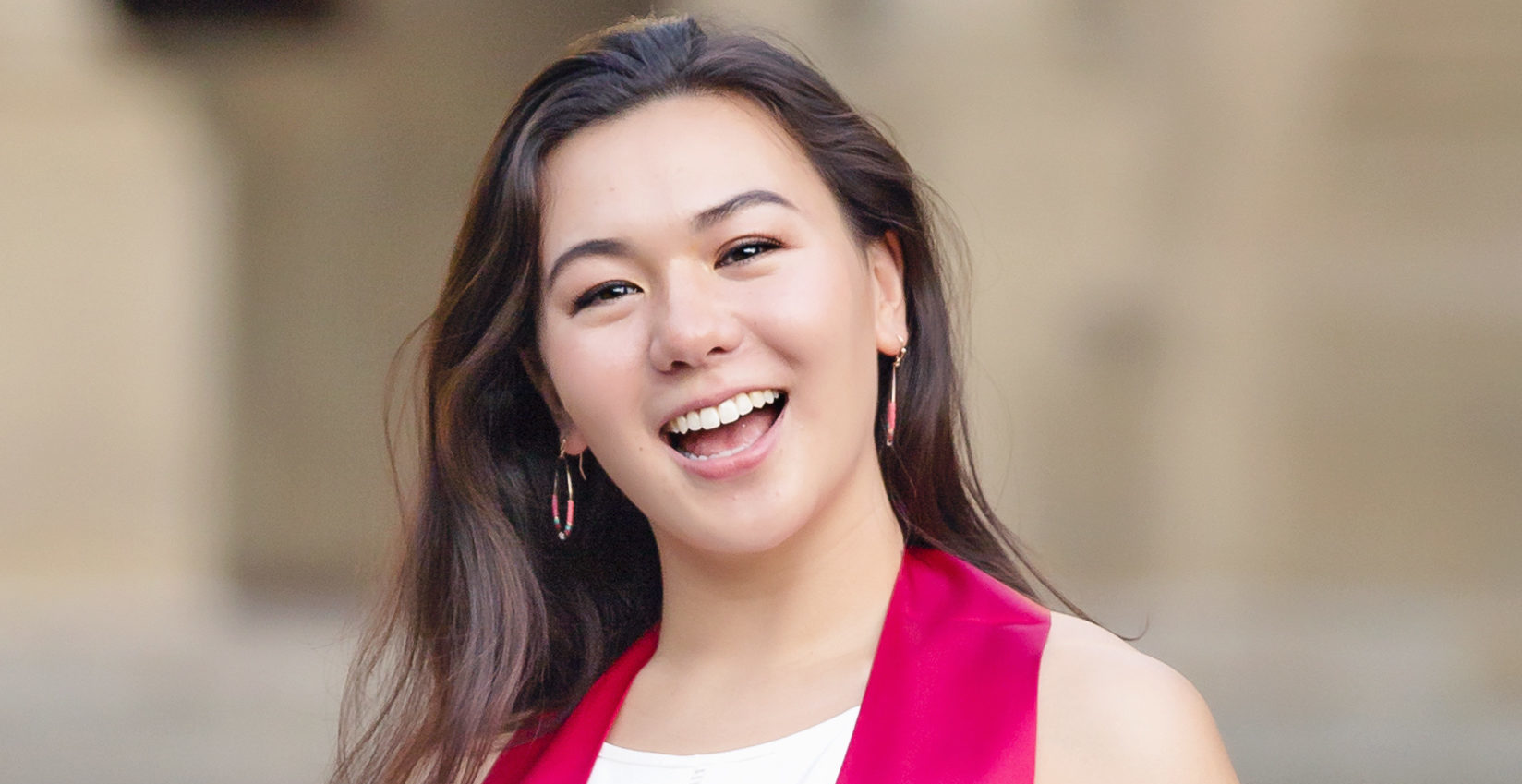
How an Urban Studies Class Made Me a Better Engineer
By Katherine Erdman, BS ’19, MS ’20
As the countdown to graduation began, I, like many other Stanford seniors, was eager to complete my general education Ways of Thinking/Ways of Doing. As I planned my fall quarter, I was on the hunt for a class that satisfied my last unfulfilled requirement: Engaging Diversity. There were almost 200 classes to choose from, but I settled on Urban Studies 164: Sustainable Cities. I had a mild interest in environmental technology, so I decided to give it a go.
On the first day of class, I was surprised that the focus of the course wasn’t on hydrogen fuel cells and electric cars. Rather, environmental health was just one of four aspects of sustainability we would be tackling, in addition to cultural continuity, social equity, and economic vitality. This broadened definition of sustainability, going beyond greenhouse gases and air quality indexes, was especially meaningful on the day we talked about transportation in the Bay Area. Like many other computer science students, I spent a summer interning at a large technology firm just miles from campus. I did not have a car and benefited from the shuttle service provided as part of the job. Every morning, I walked a few minutes to the nearest stop, hopped on the bus, and arrived to work without issue. I brought this up as an avenue to increase sustainability. The buses were quite full and eliminated at least hundreds, if not thousands, of mostly single-occupancy cars from the road. While my classmates agreed that the shuttles helped with environmental health, I was challenged to also consider the soaring housing prices near newly placed shuttle stops that make longtime residents unable to afford to stay. They are often replaced by tech workers, eager to be closer to the shuttle stop and able to afford higher rent. Perhaps certain shuttle stops trade off cultural continuity in pursuit of sustainability?
Through many eye-opening discussions, I more clearly saw the effects of sustainability efforts within the social and cultural realms by the end of the quarter. I walked away with a new perspective, which I applied to my senior project class CS210: Software Project Experience with Corporate Partners. My CS210 team partnered with Oracle and was given the task of creating social good technology. We decided to tackle the issue of employment opportunities for formerly incarcerated individuals. Within this space, it’s easy to identify unmet needs, such as the need for technological education for someone who has been disconnected from the job market for a number of years or the need for mock interviews for someone who has never formally applied for a job before. However, my experience in Urban Studies 164 helped me understand how any solution has to fit within a larger ecosystem. I found that my team and I were challenged to look beyond economic vitality and consider the cultural continuity and social equity concerns that our solution had to address. Whether integrating our solution into the parole preparation process for the incarcerated in Australia or modifying the product’s user interface to be approachable for first-time digital users, our team attempted to address cultural and social issues that appear tangential, but are deeply connected to the product’s success.

Katherine Erdman, BS ’19, is a coterminal master’s student in computer science from Ellicott City, Maryland. During her senior year, she took Urban Studies 164: Sustainable Cities, a Cardinal Course that introduces students to sustainability concepts and urban planning as a tool for determining sustainable outcomes in the Bay Area. Katherine has been involved in the Business Association of Stanford Entrepreneurial Students, SHIFT: Healthcare Innovation @ Stanford, and she++. She is also a member of the Student Alumni Council and the Viennese Ball Steering Committee.
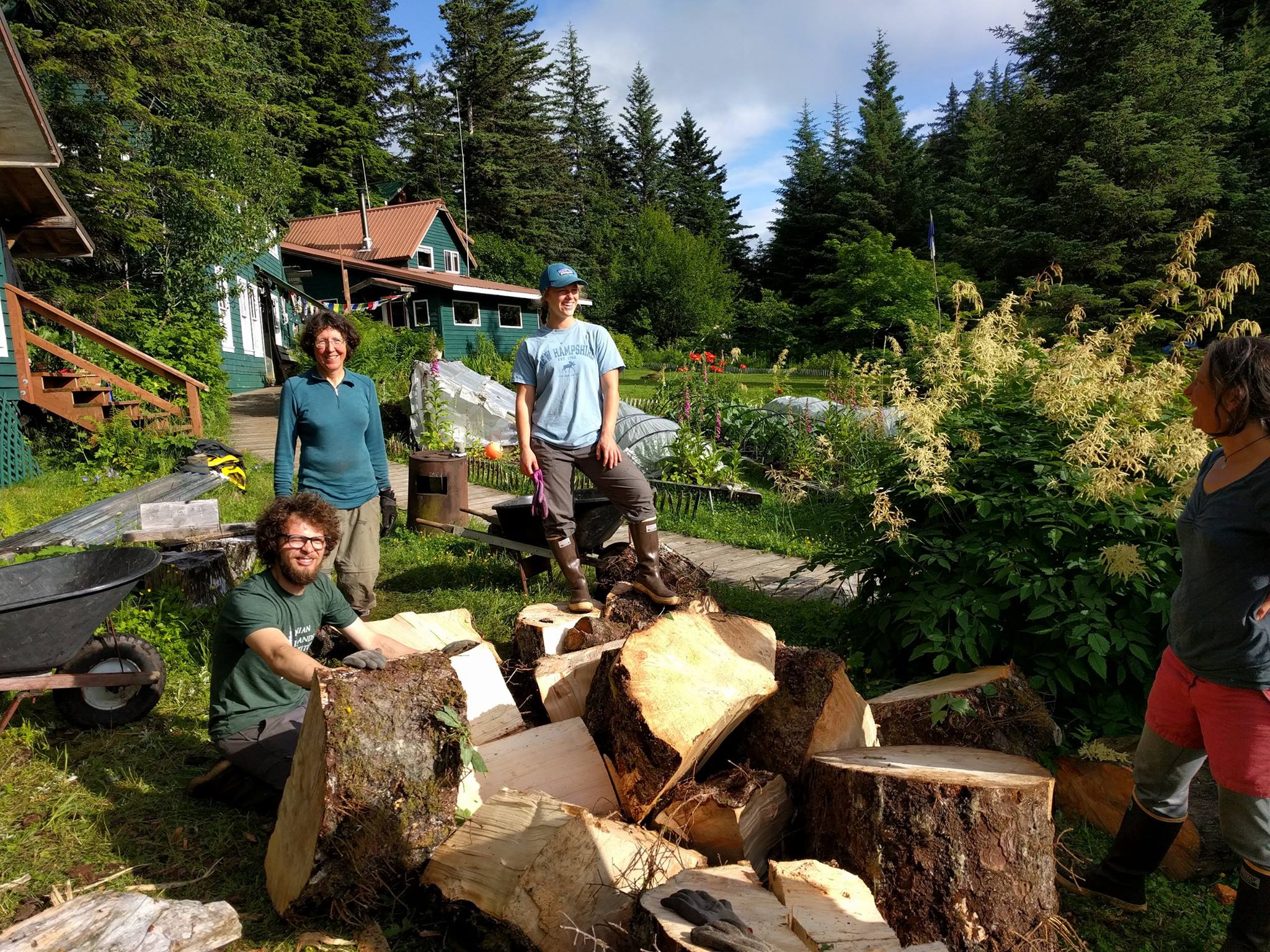
Notes from Magic Beach: small-town sustainability in southeast Alaska
By Madelyn Boslough, ’18 (Electrical Engineering)
Sea lions sang me to sleep in the dusky pink afterglow of a midnight sunset in southeast Alaska. Their bellows, echoing across the strait to my tent on Magic Beach, were surprisingly soothing, harmonizing with the gentle crash of tiny waves on gravel and kelp. The beach was aptly named. Each morning, I woke under a low ceiling of fog, obscuring the peaks of the Inian Islands and giving the whole place a mystical air.
Though I was born and raised in Alaska’s Wrangell St. Elias National Park, I had never spent time in the Southeast region of the state until I was awarded a Cardinal Quarter through the Alexander Tung Memorial Fellowship to serve with the Inian Islands Institute.
I was captivated by the beauty of the Institute’s location on a remote rainforest island off the coast of Gustavus, Alaska, and intrigued by its mission of inspiring youth to care about the environment by using experiential education. The Institute was founded by four Stanford PhD students, including the director, Zachary Brown, a recent PhD graduate in environmental science and fellow Alaskan.
The school intends to model sustainable living, and Zach offered me a position updating the Institute’s micro-hydroelectric system, which provided electricity to off-grid property. I was thrilled to take the lead on a project in small-scale renewable energy. I love Alaska with all my heart and have always intended to use my education to serve the environment and communities that shaped and supported me. I majored in electrical engineering to work in renewable energy and influence my state to rely less on oil and use more environmentally friendly technologies.
Over the course of the summer, I researched existing micro-hydroelectric systems in rural Alaska and began to plan a retrofit of the system on the island. I assessed the school’s present and future electricity demands, and the potential for incorporating other renewable energy sources like wind and tidal.
I was grateful for training in Stanford’s Principles of Ethical and Effective Service, especially preparation and humility. Preparation guided me through the tasks and challenges I expected; humility allowed me to navigate the inevitable unexpected tasks and challenges for which I had not prepared.
For example, on my first trip to the island where the Institute is based, I discovered that I would be closely working with a seasoned fisherman named Greg. Greg was a brilliant engineer without a college degree, who imagined, designed, and installed the micro-hydroelectric system on the island in the 1980s, long before terms like “renewables” and “microgrids” were heard in Alaska. He had done all this by corresponding with a Canadian hydroelectric manufacturer via handwritten letter, and with the help of a few good friends for the system’s actual construction.
Then, nearly 40 years of dependable renewable electricity later, I showed up to “fix” his ingenious but aging design. It took weeks for Greg to stop responding to my questions with a terse, “You’re the electrical engineer; you tell me.” Only by persistent, respectful questioning and listening was I able to earn his grudging willingness to help me.
Living in Gustavus was a profound civic awakening. An isolated town of only 400 people, Gustavus is an intimate place where everyone knows everyone, and every person plays a visible role in the social fabric. Just by arriving, I took on a role as well. My actions could affect everyone in town, and realizing this, everything I did took on a greater importance. I had a responsibility to the community of Gustavus, and by the end of the summer, I had made an impact. I left knowing that my actions make a difference and that I can be of real service to the Alaskan communities I love.
Working on small-scale renewable energy was a microcosm for the greater issues of climate change and planetary sustainability—a window into a wicked problem. Working with Zach, Greg, various handymen and community volunteers, and the Institute’s board of directors pushed me to understand how to work with a team with diverse expertise to tackle difficult problems. Through my fellowship I focused on the questions of what I want to do with my life and what kind of impact I hope to have on this world. I learned from Zach that a bias toward action is key—in the face of a terrifying, massive problem like climate change, the only thing to do is to choose somewhere to start, and do something.
Madelyn was one of 486 students who completed a Cardinal Quarter in 2017.
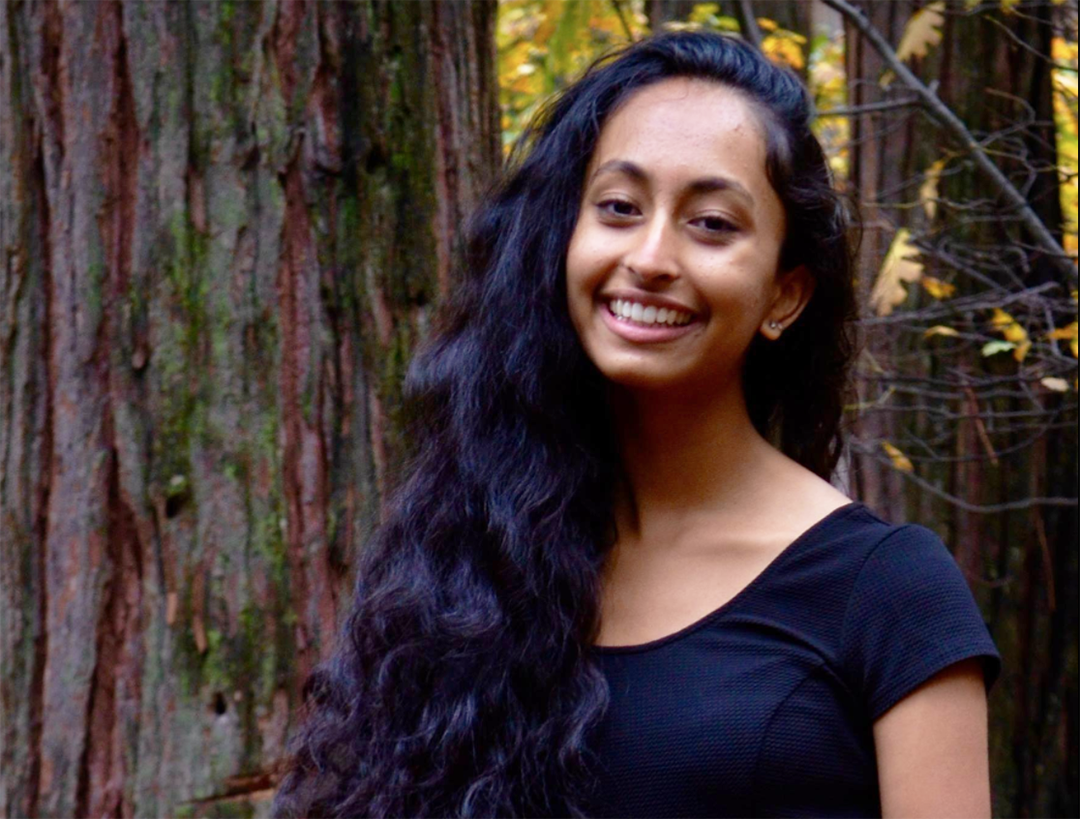
Technology aiding advocacy
By Mayuka Sarukkai, ’19 (Symbolic Systems)
The landlord won’t remove lead paint from the walls – which means health problems for the kids, which means frequent hospital visits, which means no time to work, which means we can’t pay rent, which means we’re being evicted. This is the story recounted by one woman over a housing hotline, but the vicious cycle of landlord abuse and displacement is a narrative shared by countless tenants who are facing the overwhelming reality of gentrification in New York City.
My summer fellowship at JustFix.nyc, a Brooklyn-based nonprofit creating technological tools to fight for housing justice, was a deep dive into this tangled world of housing in NYC. Over the course of nine weeks, I worked on building – from outreach to user research to design to deployment – a new online referral directory designed to provide targeted referrals to best-match legal service providers and community advocates for these tenants facing housing crises. This summer was the first time I truly felt I had access to an arsenal of tools and experiences to bridge real human stories and intentional product development, and to understand what it really means to work at the intersection of humans and computation to create a positive community impact.
Interested in spending a summer doing public service? Find out more about Cardinal Quarter.
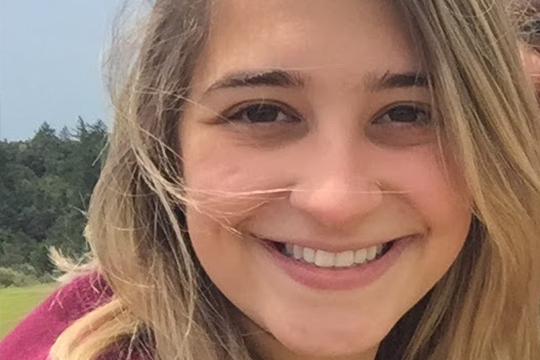
Capable
By Sophia Laurenzi, ’17 (Psychology)
At the end of the graduation lunch for the Hope House Scholars Program, a woman from Hope House thanked the teaching team for treating her without judgment and with the sense that she is capable.
Through tutoring at Hope House, a residential recovery program that women are often court-mandated to, and volunteering with The Last Mile, a start-up that teaches coding and professional skills to incarcerated individuals, I have worked with dozens of people who society sees as incapable–incapable of learning, of changing, of redemption. It has been the deepest joy of my time at Stanford to witness those involved with the criminal justice system shift from seeing themselves as incapable to capable.
The smallest moments can instill this confidence; learning a dance step in the Cardinal Service Dance in Prison course, writing a topic sentence, sharing a thought in a group discussion. These experiences have taught me that it is not ethical or even possible to try to “change” individuals in the criminal justice system. It is possible, and beautiful, to build relationships, environments, and skills that support others to tap into the universal human potential for change within themselves.
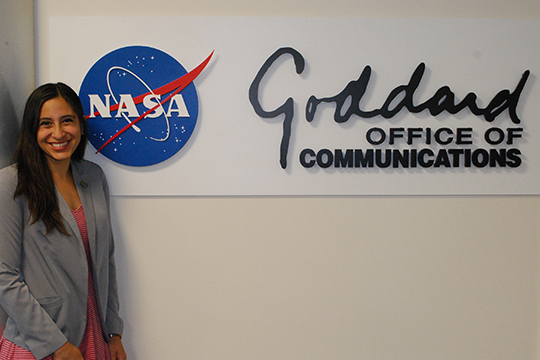
Engaging new audiences
By Patricia Flores, ’18 (Communication)
After my first day at NASA Goddard Space Flight Center in Greenbelt, Maryland, I felt like I was in way over my head. I wasn’t a STEM major, so how was I expected to write and create content about highly technical science information? Additionally, how could I approach my work through an angle that made me feel like I was making some sort of impact?
With the help of mentors and by not being afraid to ask questions—even ones that seem extremely basic—I discovered that I could find the way in which my work for NASA Goddard felt meaningful to me. Specifically, the projects I worked on to increase NASA’s Spanish outreach were very fulfilling. I had the opportunity to interview three amazing and incredibly intelligent Latinx engineers about their research and write feature-length profiles on each of them in Spanish. I translated outreach material, did voice-overs for mission videos, and crafted some tweets for our @NASA_es Twitter page. At the end of the summer, it was so rewarding to know that my work distilled very technical information on extremely relevant science topics to an audience that normally doesn’t engage in these spaces.
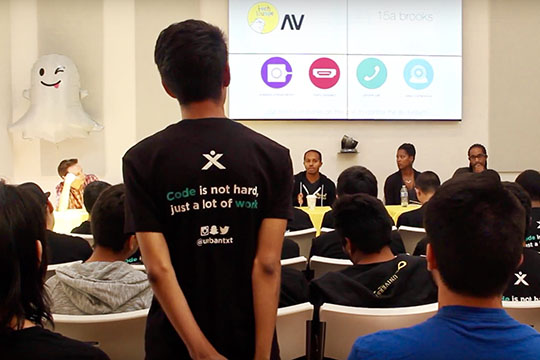
“First place—Safe Zone.”
By Po Tsui, ’19 (Symbolic Systems) and Naomi Gregorio, ’19 (Mechanical Engineering)
As the winner was called, Anthony Ramirez, a sophomore from LACES High School, rose in disbelief to his feet. A USC lecture hall filled to capacity—families with young siblings, startup investors from Silicon Valley, media crews, and twenty-nine male high school students from South Central Los Angeles—witnessed as Anthony and his team won $5,000 seed funding for Safe Zone, a start-up mobile application that helps teens connect with doctors and health clinics regarding sexual health with the aim of preventing teen pregnancy and STDs, an issue these inner city youth can personally relate to.
At Teens Exploring Technology, we worked as coaches in the Summer Leadership Coding Academy to teach programming, entrepreneurship, product development, and leadership. Each team pulled all-nighters and struggled throughout the development process as they were constantly dared to break the limits not only of their product, but also of their own personal conviction. With the needs of their community in mind, they designed wireframes, built databases, pitched to investors, and grew to be effective leaders. Whether or not these students’ apps will endure the test of time and transform the world, the true products—their transformed selves—certainly will.
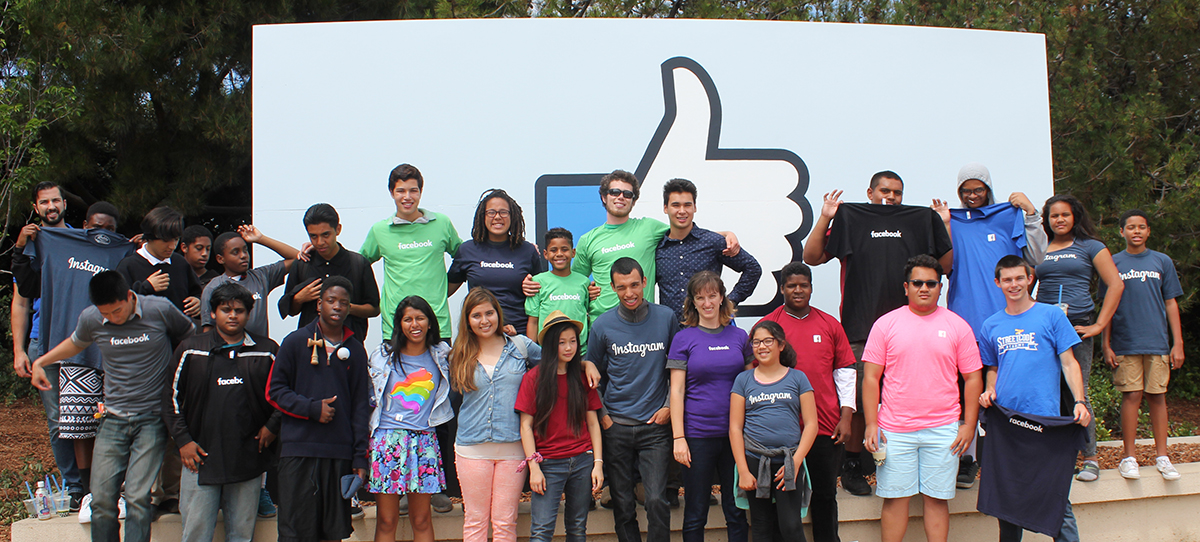
Empowering youth to achieve their dreams through technology
What if there was a summer camp where every day is like a hackathon? Rafael Cosman, ’15, teamed up with two other Stanford students to create CodeCamp, a four-week summer program for high school students in East Palo Alto.
By Van Tran, ’16
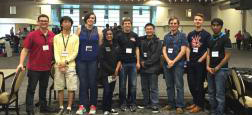
New cybersecurity group hits the ground running
By Pablo Arturo Lozano, ’18 (International Relations)
 The idea to start the student-led group Applied Cybersecurity came just before starting freshman year when a Stanford IT official came to me to talk about cybersecurity. I had just returned from doing cybersecurity and communication security in the Army Signal Corps, so naturally I jumped on board, hoping to help make Stanford students and faculty aware of both tech development and the security and defense of the systems that we now heavily rely on for day to day life.
The idea to start the student-led group Applied Cybersecurity came just before starting freshman year when a Stanford IT official came to me to talk about cybersecurity. I had just returned from doing cybersecurity and communication security in the Army Signal Corps, so naturally I jumped on board, hoping to help make Stanford students and faculty aware of both tech development and the security and defense of the systems that we now heavily rely on for day to day life.
The group now hosts regular technical and policy related workshops for Stanford grad and undergrad students. After less than 6 months the group was able to field both a cyber white hat hacking competition team and a cyber policy competition team. The hacking team placed second in the Western Regional Collegiate Cyber Defense Competition Invitational allowing them to progress to regionals where they placed fourth overall and third in “Best Defense.”
Applied Cybersecurity aims to fulfill its commitment to being all inclusive and find a way to better address cybersecurity policy issues rather than solely technical issues. We also plan to collaborate with UC Berkeley’s cyber team and continue our relationship with Stanford’s Cyber Initiative to develop even more cohesive curriculum and more accessible forums to educate team members and the general public.
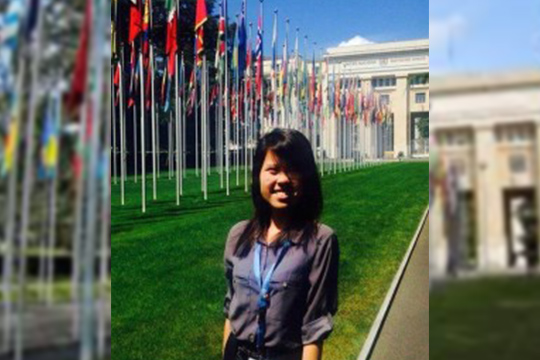
Strategy for humanitarian aid
By Monica Chan, ’17 (Mechanical Engineering; International Relations (minor))
Time: June 2015. Place: Geneva, Switzerland.
Finally, I had arrived for my long-awaited summer internship with the Shelter and Settlement Section of the United Nations High Commissioner for Refugees (UNHCR).
During my 9-week internship, I was taken on board several projects. The most interesting project I was involved in used the UNHCR’s newly developed “Master Plan” concept. The “Master Plan” aims to promote holistic and comprehensive design and development of settlements. My specific project was to develop a plot of land (1500 hectares) in Kenya not only to build a new refugee camp, but also to work towards a more sustainable solution for interaction between the refugee and host communities. I started the first steps by conducting research on the incoming refugee population, tracing out land contours, and studying the county government’s Integrated Development Plan. Drawing multiple drafts of camp designs was a long and iterative process, but essential to developing a settlement that ensures the safety and dignity of refugees.
This summer internship allowed me to merge my three passions – engineering, global affairs and public service. Working with such a qualified, dedicated team at an international humanitarian aid organization has definitely motivated me to educate people on and off campus about refugee crises and to be a more strategic advocate for human rights.
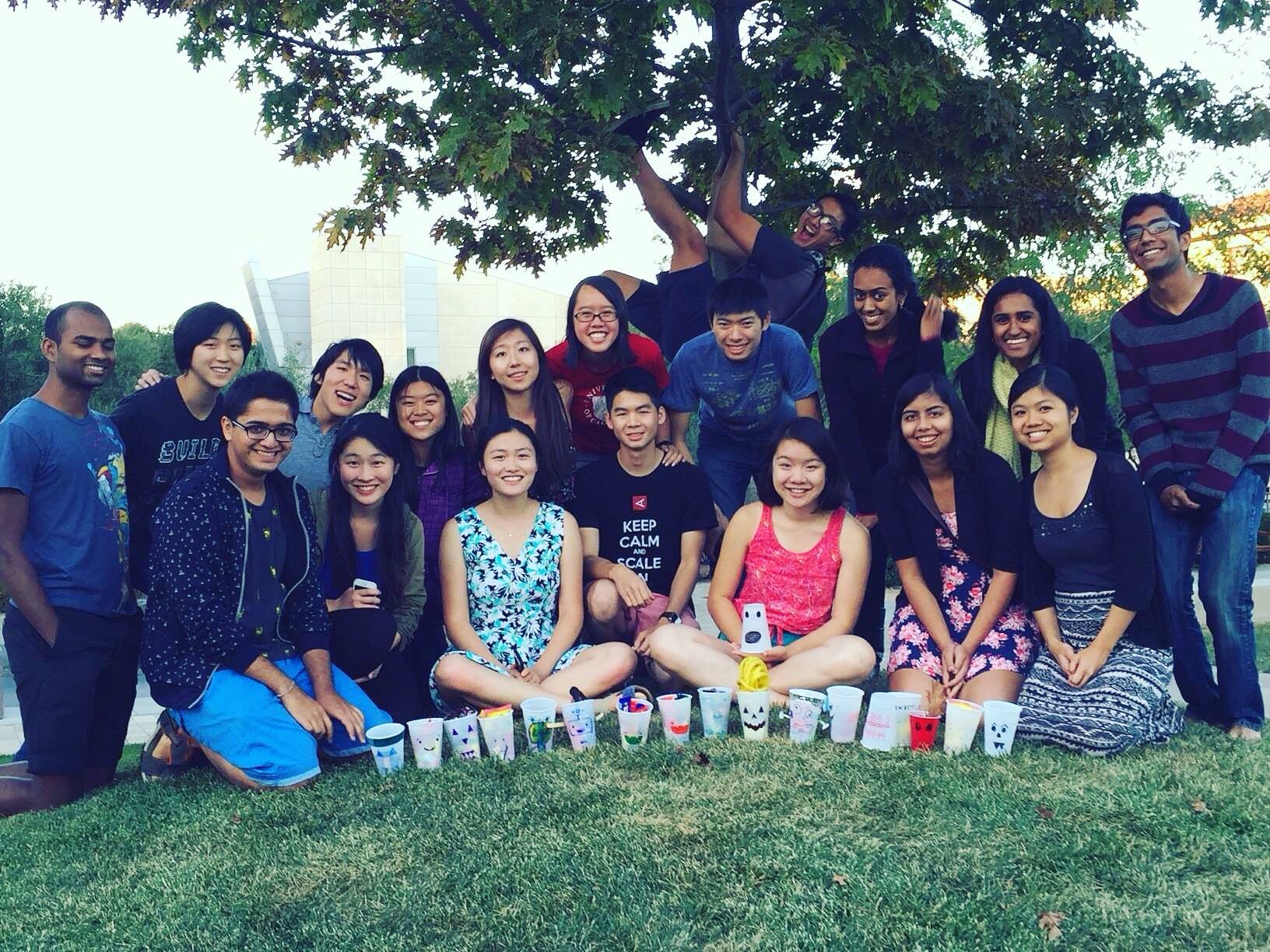
Building community with CS+Social Good
By Vicki Niu, ‘18 (Computer Science)
Coming to Stanford, I had big dreams. My conviction was to bring my passion for social change to the tech world of Silicon Valley. However, the glamour and pressure of the tech bubble slowly siphoned that conviction out of me. Over the course of fall quarter, I spent my time recruiting at big tech companies and organizing events that only helped those already advantaged by Silicon Valley’s power structure.
I was disappointed in myself, but motivated to change the culture and pressures that led me astray. Lawrence Murata, ’17; Manu Chopra, ’17; Edward Wang, ’17; and I started CS+Social Good in January 2015 to form a community that would hold each other accountable for driving technology towards social impact. We’ve organized mixers bringing hundreds of people together, a project-based class engaging students in building web technologies for social good, workshops, speaker events, and longer initiatives aimed at empowering people. The people I know from CS+Social Good inspire me every day to learn more, work harder, and discover more ways to live out social impact. I’m more excited than ever about the potential for tech to drive change, and I can’t wait to see what lies down that path.
